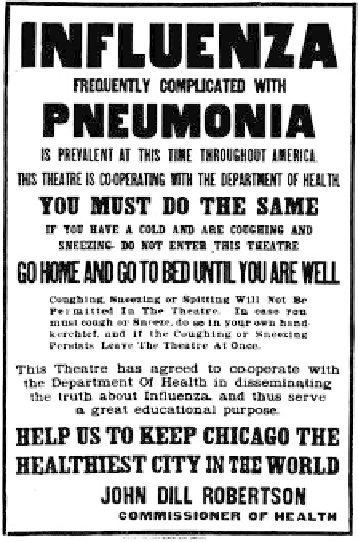Geoscience Reference
In-Depth Information
Figure 17.5 Infectious disease transmissibility mitigation techniques are long-
standing and likely will be employed again as part of overall pandemic plans and
their implementation. (Office of the Public Health Service Historian.)
pandemic preparedness plans specifically address the availability, distribution, and
use of vaccines.
However, a vaccine must be matched precisely to the virus in circulation.
The laborious process for developing this “match” typically takes months.
*
his
time lag is crucial; if a highly transmissible virus were to cause a pandemic, many
thousands (even millions) of people could be infected, many of whom could die
before a vaccine were to become available. Furthermore, the time lag is not the
only issue concerning vaccines. It is possible or even likely that the vaccines, once
developed, would not be available in sufficient quantities to be distributed to all
affected populations. Therefore, prioritization of recipients will be required (e.g.,
health care workers and emergency management responders could be first on such
*
There is hope for great improvement in this area. New vaccine development techniques prom-
ise dramatic decreases in time required to develop the vaccine. For instance, the National
Institute of Standards and Technology and the University of Queensland in Australia have
“successfully demonstrated ... findings that could reduce the time it takes to produce a vaccine
from months to weeks....” National Institute of Standards and Technology,
NIST Tech Beat
,
December 8, 2008).



